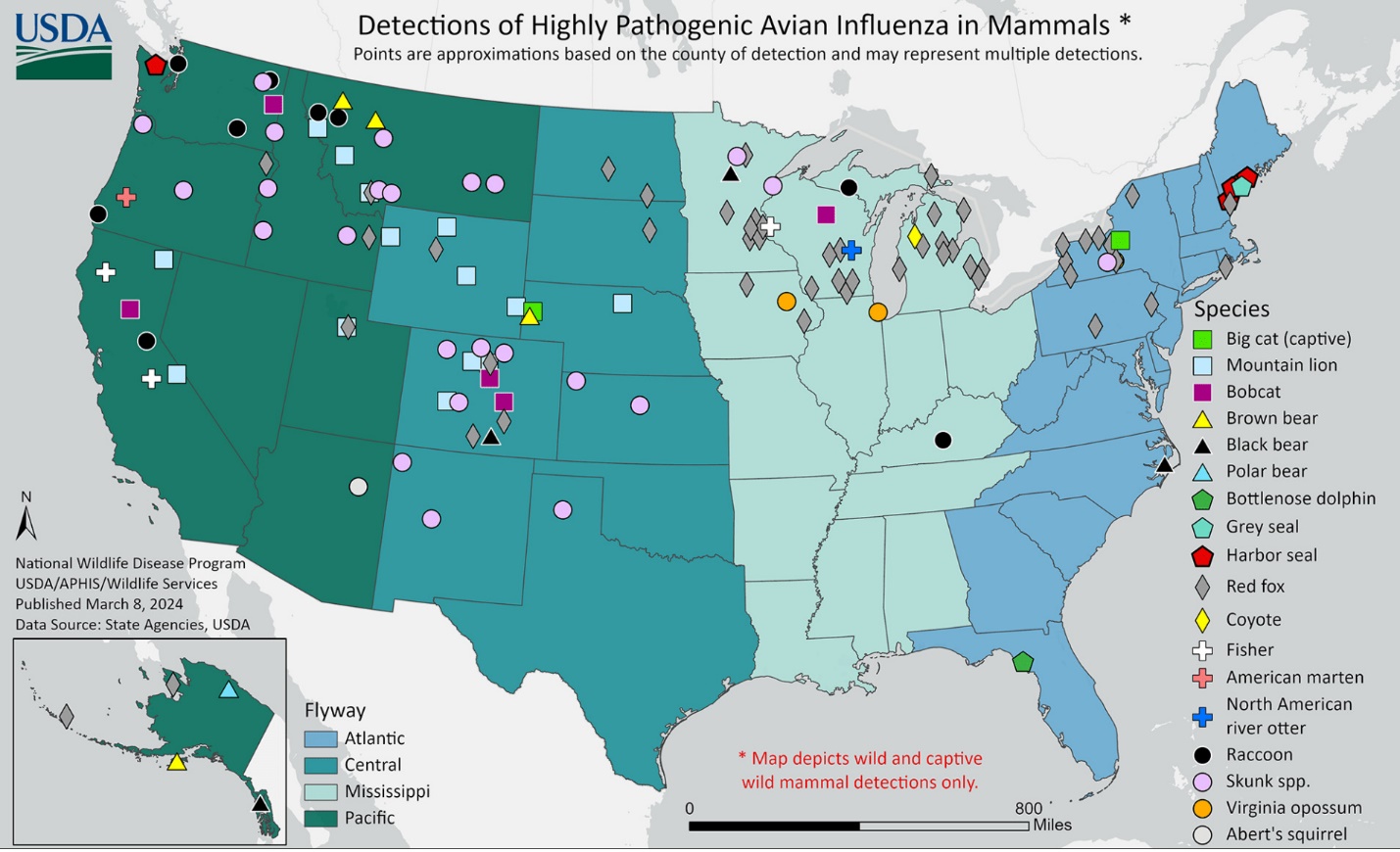
 The importance of emergency management in agriculture should be one of the first things we think about, especially under the current impacts of Highly Pathogenic Avialian Influenza (HPAI/bird flu).
The importance of emergency management in agriculture should be one of the first things we think about, especially under the current impacts of Highly Pathogenic Avialian Influenza (HPAI/bird flu).
I am starting this week at my University Extension job working with the United States Department of Agriculture, Animal and Plant Health Inspection Service (USDA, APHIS). We have been in discussions about Extension’s role regarding emergency management training. As I wrote Extension’s outreach component this morning and had the emails hit my desk about the influenza with the US dairy herds, I begin to realize what an important role emergency management has in our food production systems.
Our climate team was warning us a few months ago that we had the warmest winter on record and to expect added disease and pests in 2024. We all thought this was important to make sure cattle herds were vaccinated and noxious weed controls were in place. We did not expect there to be bird flu reported in dairy herds in the Spring of 2024. My biggest concern is the impact to the dairies and subsequently, to milk prices as they investigate the evolution and risk management protocols.
Emergency management does not always mean that the emergency has happened. It also focuses on the ‘what if’ something happens. While the livestock industry will deal with USDA, APHIS in its planning and regulatory compliance, all USDA agencies have a responsibility under different scenarios. For example, the USDA, Food and Nutrition Service has a food safety emergency response system.
Testing is showing that our milk supply is safe for human consumption. It is the hype that makes it scary for consumers. It brings back the discussion we had earlier this year about raw milk at the Small Ag Conference in Fallon; it is the pasteurization processes that are assisting in keeping the milk products safe for consumption and so it can be used as an emergency management tool. The US Food and Drug Administration (FDA) is advising against the consumption of raw milk. There are rumors that USDA will begin testing ground beef samples from grocery stores in the near future as a precaution.
The global H5N1 bird flu outbreak began in 2020 in Europe. The bird flu has been increasing infecting mammals on land and in the sea. The poultry industry was hit the hardest with more than 90 million birds euthanized in the United States. It seems that the dairy herds are recovering, but testing is showing remnants of the virus. The infographic below describes the detection of the virus in wild and captured mammals from USDA, APHIS Wildlife Services, which was the only infographic available at this time.
I believe that emergency management planning is something we all need to think about. How do we continually protect our agricultural products (animals and food products) to the best of our ability? We do have access to the USDA with its vast knowledge and expertise. We need to do the planning, and find our partners, before something does happen. Once something happens, the chain reaction can be harmful to the industry as a whole.
I encourage you all to pay attention to what is happening in the dairy industry. It could have a chain reaction that could also hit the beef industry. All producers that I know, take pride in what they produce and do everything they can to have a safe product.
The fear is that sometimes we are so worried about the local emergency management of floods, heat, and feed that we don’t look at the larger picture of what is happening in the US and World when it comes to the type of product we produce. Especially, those types of things that are way out of the producer’s control.
We are navigating 2024 now with some water, high temperatures expected, and more disease and pests expected. Nevada Department of Agriculture (NDA) is taking a proactive approach to monitoring HPAI/bird flu and is communicating with the industry. Being a cattle producer and/or a dairyman is not for the faint of heart.
We need to use all resources available to us and all work together for a vibrant future livestock industry.
By Staci Emm | Editorial

